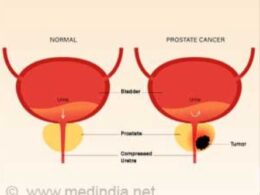This is a republication of the article below, with the title above.
World Hepatitis Day: a disease neglected for too long
The Lancet
Rob Brierley,
Editor-in-Chief of The Lancet Gastroenterology and Hepatology.
July 28, 2022
Hepatitis B viruses and DNA, illustration. KATERYNA KON/SCIENCE PHOTO LIBRARY
This site version was edited by:
Joaquim Cardoso MSc.
health transformation . institute
atlas of diseases unit
July 28, 2022 (abodeimage)
What is the problem?
- 354 million people worldwide are living with chronic hepatitis B and hepatitis C, …
- with 1.1 million dying every year from a related illness. These figures outstrip those for HIV/AIDS and malaria.
What are the causes?
We have the tools to eliminate viral hepatitis.
But efforts are lagging.
What is the message?
The burden of viral hepatitis is underappreciated and there is little political support for elimination efforts.
Viral hepatitis has been neglected for too long.
- There is an urgent need for action-from policy makers, decision makers, and funding agencies-to drive elimination efforts.
- Access to prevention, diagnostics, and treatment must be expanded dramatically, especially in low-income and middle-income countries, and the HBV birth-dose vaccine must be universally available. Hepatitis can’t wait.

Today (July 28th) is World Hepatitis Day. 354 million people worldwide are living with chronic hepatitis B and hepatitis C, with 1.1 million dying every year from a related illness. These figures outstrip those for HIV/AIDS and malaria.
We have the tools to eliminate viral hepatitis.
We have an effective cure for hepatitis C and can prevent hepatitis B through early-life vaccination.
In 2016, the World Health Organization set goals for all countries to eliminate chronic viral hepatitis as a public health threat by 2030.
But efforts are lagging.
In 2019, only 10% of people with chronic hepatitis B knew their diagnosis, and just 22% of those eligible for treatment received it.
Less than half of children received timely vaccination at birth.
Similarly, only 21% of people with chronic hepatitis C were aware of their diagnosis, and 62% of those diagnosed received treatment.
The burden of viral hepatitis is underappreciated and there is little political support for elimination efforts.
Despite major commonalities with the “big 3” infectious diseases -HIV/AIDS, malaria, and tuberculosis —
- potential synergies in existing vaccination, testing, and treatment networks have not been exploited and funding remains poor;
- treatment for hepatitis C monoinfection is not directly funded by any of the major global health agencies, and
- while funding for the birth-dose HBV vaccine has been approved, rollout has been delayed by the COVID-19 pandemic.
Viral hepatitis has been neglected for too long.
There is an urgent need for action-from policy makers, decision makers, and funding agencies-to drive elimination efforts.
Access to prevention, diagnostics, and treatment must be expanded dramatically, especially in low-income and middle-income countries, and the HBV birth-dose vaccine must be universally available. Hepatitis can’t wait.
There is an urgent need for action-from policy makers, decision makers, and funding agencies-to drive elimination efforts.
Access to prevention, diagnostics, and treatment must be expanded dramatically, especially in low-income and middle-income countries, and the HBV birth-dose vaccine must be universally available. Hepatitis can’t wait.
Written by Related content: Rob Brierley, Editor-in-Chief of The Lancet Gastroenterology and Hepatology.
Originally published at https://www.linkedin.com.
Related content:
- Global, regional, and national burden of hepatitis B, 1990–2019: a systematic analysis for the Global Burden of Disease Study 2019
- Global change in hepatitis C virus prevalence and cascade of care between 2015 and 2020: a modelling study
- Interventions to enhance testing, linkage to care, and treatment initiation for hepatitis C virus infection: a systematic review and meta-analysis












